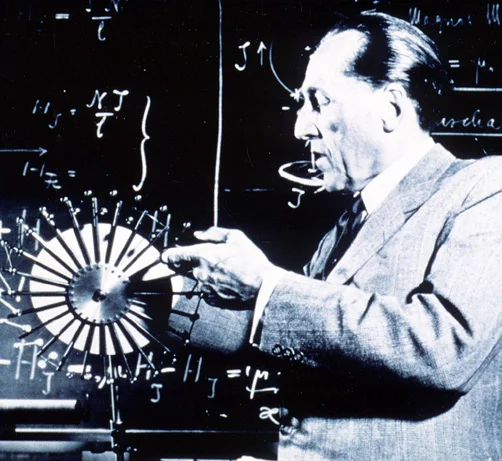Paul Scherrer (1890 - 1969) – A brief biography
Paul Scherrer was born on 3rd February 1890 in St.Gallen. In 1908, he enrolled at ETH Zurich, changing course from Botany to Mathematics and Physics after two semesters. In 1912, Scherrer spent one semester at Königsberg University, then undertook further studies at the University of Göttingen, graduating from there with a doctorate on the Faraday Effect in the hydrogen molecule. In 1916, while still working on his dissertation, he and his tutor, Peter Debye, developed the Debye-Scherrer powder method
, a procedure using X-rays for the structural analysis of crystals. This made an important contribution to the development of the scattering techniques that are still used in the large facilities at the Paul Scherrer Institute to this day. Debye received the Nobel Prize for chemistry for this work in 1936.
ETH Zurich appointed Scherrer to the post of Professor of Experimental Physics in 1920, at the early age of 30. In 1925, he organised the first international conference of physicists to take place after the First World War. He became Principal of the Physical Institute at ETH in 1927 and focussed its direction on nuclear physics, a research branch that was still coming into being at that stage. The first cyclotron at ETH Zurich was built under his direction in 1940.
In parallel with his main professional occupation as a researcher and leader of an institution, Paul Scherrer also served in various institutions and committees involved in the dissemination of nuclear energy in Switzerland: the Swiss Federal Council appointed him to the post of President of the Swiss Study Commission on Atomic Energy in 1946, and President of the Swiss Commission for Atomic Sciences in1958. In addition, he also took part in establishing CERN near Geneva in 1954, and in setting up Reaktor AG to study the construction and operation of nuclear fission facilities one year later, in Würenlingen.
His abilities and foresight led to the early development of new branches of solid-state physics, particle physics and electronics, and this made a vital contribution to the high standard of research at Swiss universities. When Paul Scherrer was made emeritus professor in 1960, after 40 years at ETH Zürich, he took up a teaching appointment at the University of Basel. He died in 1969, as the result of a riding accident.

